Princess Alice, Countess of Athlone
Last updated| Princess Alice | |||||
|---|---|---|---|---|---|
| Countess of Athlone | |||||
 Princess Alice in 1911 | |||||
| Born | Princess Alice of Albany 25 February 1883 Windsor Castle, Berkshire, England | ||||
| Died | 3 January 1981 (aged 97) Kensington Palace, London, England | ||||
| Burial | 8 January 1981 | ||||
| Spouse | |||||
| Issue | Lady May Abel Smith Rupert Cambridge, Viscount Trematon Prince Maurice of Teck | ||||
| |||||
| House | Saxe-Coburg and Gotha (until 1917) Windsor (from 1917) | ||||
| Father | Prince Leopold, Duke of Albany | ||||
| Mother | Princess Helen of Waldeck and Pyrmont | ||||
| Signature | | ||||
Princess Alice, Countess of Athlone VA GCVO GBE GCStJ (Alice Mary Victoria Augusta Pauline; 25 February 1883 – 3 January 1981) was a member of the British royal family. She was one of the longest-lived British royals. Princess Alice was the chatelaine of Rideau Hall in Ottawa from 1940 until 1946, while her husband Alexander Cambridge, 1st Earl of Athlone, served as Governor General of Canada.
Contents
Early life
Princess Alice was born on 25 February 1883 at Windsor Castle, the only daughter of Prince Leopold, Duke of Albany (the youngest of the four sons of Queen Victoria and Albert, Prince Consort) and his wife Princess Helen of Waldeck and Pyrmont. [1] Her younger brother and only sibling, Prince Charles Edward (later Duke of Saxe-Coburg and Gotha), was born on 19 July 1884.
She was baptised in the Private Chapel of Windsor Castle on 26 March 1883, and named Alice after her late paternal aunt Princess Alice, Grand Duchess of Hesse. Her godparents were: Queen Victoria (her paternal grandmother); the German Empress, for whom Alice's paternal aunt Princess Beatrice stood proxy; the King of the Netherlands (her maternal uncle), for whom the Dutch Ambassador Count Charles van Bylandt stood proxy; the Grand Duke of Hesse and by Rhine (her paternal uncle), represented by his brother-in-law Alfred, Duke of Edinburgh; the Princess of Waldeck and Pyrmont (her maternal grandmother); the Prince of Wales (her paternal uncle); the Princess Royal (the German Crown Princess - her paternal aunt) represented by her sister-in-law the Princess of Wales; Prince Wilhelm of Württemberg (her maternal uncle), represented by his cousin the Duke of Teck; the Hereditary Princess of Bentheim and Steinfurt (her maternal aunt), for whom her paternal aunt Princess Christian stood proxy; and the Duchess of Cambridge (her grandmother's aunt), represented by her daughter the Duchess of Teck. [2] She was confirmed at the Royal Memorial Church of St George, Cannes, in 1898 with Queen Victoria present. [3]
Princess Alice was one of the carriers of the gene for haemophilia which originated with Queen Victoria. Princess Alice inherited the gene from her father, who died from the disease when she was one year old. [4]
Marriage and family

On 10 February 1904, at St George's Chapel, Windsor, Princess Alice of Albany married her second cousin once removed Prince Alexander of Teck, the brother-in-law of the Prince of Wales (later George V). [1] [5] Alice was attended by five bridesmaids, all cousins: Princesses Margaret and Patricia of Connaught, Princess Helena of Waldeck and Pyrmont, Princess Mary of Wales and Princess Mary of Teck (the latter two also the groom's nieces). Alice and her husband were both descended from King George III. They had three children:
- Princess May of Teck, later Lady May Cambridge (23 January 1906 – 29 May 1994); married Sir Henry Abel Smith in 1931, had issue.
- Prince Rupert of Teck, later Viscount Trematon (24 August 1908 – 15 April 1928); died in a car accident.
- Prince Maurice Francis George of Teck (29 March 1910 – 14 September 1910); died at five months old.
Her husband was granted the Earldom of Athlone in 1917, during the First World War, following the royal family's relinquishing of German titles under the Titles Deprivation Act 1917. Following the Earl's retirement from military service after the war, the couple moved to Clock House within Kensington Palace, the grace and favour apartment that had previously been occupied by Alice's mother; [1] in 1923 they also acquired a country house, Brantridge Park in West Sussex. [6]
Princess Alice was godmother to Queen Beatrix of the Netherlands, who is the granddaughter of her first cousin on her mother's side, Queen Wilhelmina of the Netherlands. [7]
South Africa, Canada and Second World War
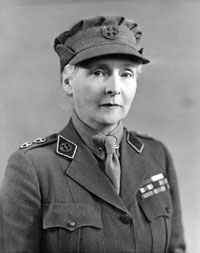
The Earl was appointed Governor-General of the Union of South Africa, and served from 1924–31. [8] Princess Alice accompanied him and was the Vicereine during that period. Lord Athlone and Princess Alice had a coastal beach house constructed at Muizenberg, which still stands today and is one of South Africa's national monuments. [9] The Cape Town suburb of Athlone was named in honour of the Governor-General; apart from the beach house and the preserved Class GL Garratt steam locomotive Princess Alice in the Outeniqua Transport Museum, it is the only physical reminder of the Athlones' residence at the Cape.
On the sudden death of the popular Lord Tweedsmuir in 1940, Canada found itself without a Governor General in time of war. Despite the longstanding intention of Canadian governments to appoint Canadian nationals as governors general—Australia had already appointed an Australian national, Sir Isaac Isaacs, as its governor general in 1931—the royal family had garnered vast public support during the royal tour of 1939. As Queen Mary's brother and a former governor general of another Dominion, Lord Athlone seemed a satisfactory candidate, and the Canadian prime minister (W. L. Mackenzie King) advised the King to appoint him.
Princess Alice accompanied her husband to Canada where he served as Governor General from 1940 to 1946, residing primarily at Rideau Hall in Ottawa. Their three grandchildren, Anne, Richard, and Elizabeth, lived with them in Canada for the duration of the war. [10]
Upon taking up his post, The Earl immediately made himself active in the support of the war effort, travelling across the country and focusing much of his attention on the troops, either those training at military facilities or those injured and in hospital. Viewing his position as governor general as a link between Canadians and their monarch, Athlone also communicated in speeches that the King stood with them in their fight against Adolf Hitler and the Nazi regime. [11]
As vicereine of Canada, Princess Alice also supported the war effort by serving as Honorary Commandant of the Women's Royal Canadian Naval Service, Honorary Air Commandant of the Royal Canadian Air Force Women's Division and president of the nursing division of the St John Ambulance Brigade. [12]

In 1944, the Princess Alice Barracks Cabin at Britannia Bay provided a summer retreat for Royal Canadian Air Force Women's Division personnel based in Ottawa. The cabin was located near the Britannia Boating Club's facilities for tennis, dancing and boating. Rented from the King's Daughter's Guild of Ottawa, the cabin featured 60 beds, a separate cookhouse and dining pavilion. The cabin had served previously as a Fresh Air Cottage for mothers and undernourished children. [13]
The war was brought close to home for the Athlones also because many of those belonging to displaced European royal families sought refuge in Canada, and resided at or near the royal and viceroyal residence, Rideau Hall. Among the royal guests were Crown Prince Olav and Crown Princess Märtha of Norway; Grand Duchess Charlotte and Prince Felix of Luxembourg; King Peter of Yugoslavia; King George of Greece; Empress Zita of Bourbon-Parma (Austria) and her daughters; as well as Queen Wilhelmina and her daughter, Princess Juliana. [14] Further, in December 1941, British prime minister Winston Churchill arrived at Rideau Hall, where he presided over British Cabinet meetings via telephone from his bed. [15]
The viceregal couple also played host at Quebec City to prime minister Mackenzie King, as well as Churchill and United States president Franklin D. Roosevelt, who all gathered to take part in what would become known as the Quebec Conferences, with the first taking place between 17 and 24 August 1943 at the viceregal residence in La Citadelle, and the second occurring from 12 to 16 September 1944 at the Château Frontenac. Photos of the Earl with Roosevelt, Churchill and Mackenzie King on the ramparts of the Citadel during the Quebec Conference were widely published at the time.
It was at these meetings that the four men discussed the Allied strategies that would eventually lead to victory over Nazi Germany and Japan. When Germany fell on 8 May 1945 and Japan on 15 August of the same year, Athlone led the national celebrations held on Parliament Hill and elsewhere. He thereafter spoke in speeches about Canada's future being marked not by war but by a strong role in reconstruction and reconciliation. [11]
During their time in Canada, the Athlones also supported various charitable and social events, and mounted a number of tobogganing parties and skating lessons on the grounds of Rideau Hall, as well as skiing in Gatineau Park. Before the couple departed from Canada at the end of Athlone's time as the King's representative, he left as a legacy the Athlone-Vanier Engineering Fellowship, awarded by the Engineering Institute of Canada. [11]
Public life

In her lifetime, Princess Alice carried out many engagements and took part in many of the activities the royal family were involved in. Apart from her normal duties as vicereine of South Africa and then Canada, she attended the coronations of four British monarchs: Edward VII, George V, George VI, and Elizabeth II, as well as the investiture of the Dutch queen Juliana. She was also the Colonel-in-Chief of two British Army units and one Rhodesian Army unit. During the Second World War, she was Honorary Air Commandant of the Royal Canadian Air Force Women's Division. In 1950, she became the first Chancellor of the University of the West Indies (then the University College of the West Indies). [16] As Chancellor, she visited the university every year, staying as a guest of Sir Kenneth Blackburne, Governor-General of Jamaica, and his wife.
From the 1930s to the 1960s she was Chair of the Council (governing body) of Royal Holloway College, University of London. With her husband, daughter and son-in-law, Princess Alice represented the King at the 1937 wedding of Juliana of the Netherlands to Prince Bernhard of Lippe-Biesterfeld. [17]
The princess and her husband visited Bahrain and Saudi Arabia in the winter of 1938. [18] She was the first member of the British royal family to visit the country and the only one to meet King Abdulaziz. [19] [20] [21] Their nephew Lord Frederick Cambridge accompanied them on the visits. [22] In Saudi Arabia Princess Alice visited Riyadh, Hofuf and Dammam, and met Noura bint Abdul Rahman, sister of the King and other members of the Saudi royal family. [23]
In 1966, Princess Alice published her memoirs, For My Grandchildren. [18] [24]
Later life and death
At the end of the Second World War, the American Military Government in Bavaria, under the command of General George S. Patton, arrested and imprisoned Alice's brother, Charles Edward, Duke of Saxe-Coburg and Gotha (who served as a member of the Reichstag from 1937 to 1945), because of his actions as a Nazi supporter during the war. Alice, learning of her brother's incarceration, came to Germany with her husband to plead with his American captors for his release. They would not yield, and in 1946 he was sentenced by a de-nazification court, heavily fined and almost bankrupted. [25]
The Earl of Athlone died in 1958 at Kensington Palace in London. [22] Princess Alice lived there until her death, dying in her sleep on 3 January 1981, aged 97 years and 313 days. [1] As of 2024 [update] , she remains the oldest living Princess of the Blood Royal and is fourth on the list of longest-living members of the British royal family, just ahead of Queen Elizabeth II and surpassed only by the Queen's aunt, mother and husband, all of whom married into the royal family.
Her funeral in St George's Chapel at Windsor Castle was attended by all members of the royal family. She is buried alongside her husband and son in the Royal Burial Ground, Frogmore, [26] directly behind the mausoleum near her grandparents Queen Victoria and Prince Albert, in Windsor Great Park. Her son, daughter and son-in-law are also buried close by.
At the time of her death she was great-aunt to the King of Sweden, Queen of the Netherlands and the Queen of the United Kingdom. She lived through six reigns: [1] those of Victoria (grandmother), Edward VII (uncle), George V (cousin and brother-in-law), Edward VIII and George VI (nephews) and Elizabeth II (grandniece).
Her will was sealed in London after her death in 1981. Her estate was valued at £182,185 (or £567,100 in 2022 when adjusted for inflation). [27]
Honours
-
 Member, 1st Class, of the Royal Order of Victoria and Albert (VA)
Member, 1st Class, of the Royal Order of Victoria and Albert (VA) -
 1 January 1948: Dame Grand Cross of the Royal Victorian Order (GCVO) [28]
1 January 1948: Dame Grand Cross of the Royal Victorian Order (GCVO) [28] -
 11 May 1937: Dame Grand Cross of the Most Excellent Order of the British Empire (GBE) [29]
11 May 1937: Dame Grand Cross of the Most Excellent Order of the British Empire (GBE) [29] -
 Dame Grand Cross of the Most Venerable Order of the Hospital of Saint John of Jerusalem (GCStJ)
Dame Grand Cross of the Most Venerable Order of the Hospital of Saint John of Jerusalem (GCStJ) -
 Royal Family Order of George V [30]
Royal Family Order of George V [30] -
 Royal Family Order of Elizabeth II [31]
Royal Family Order of Elizabeth II [31]
Honorary military appointment
-
 Commandant-in-Chief, First Aid Nursing Yeomanry [32]
Commandant-in-Chief, First Aid Nursing Yeomanry [32]
Arms
As a granddaughter of Queen Victoria in the male line, Princess Alice was entitled to use the Royal Arms with a 5-point label for difference, the central point bearing a cross gules, the others hearts gules.
 |  |  |
|---|---|---|
Princess Alice's coat of arms | Alice's banner of arms, a five-point label, the first, second, fourth and fifth points charged with a red heart, the third point charged with the Cross of St. George | Alice's personal banner of arms in Scotland. |
Ancestry
| Ancestors of Princess Alice, Countess of Athlone |
|---|
Related Research Articles
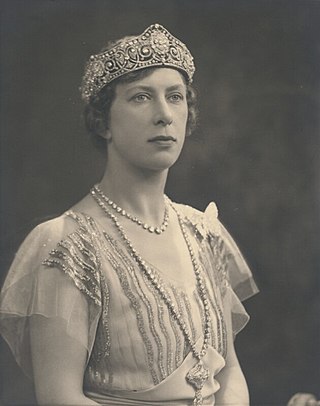
Mary, Princess Royal was a member of the British royal family. She was the only daughter of King George V and Queen Mary, the sister of Kings Edward VIII and George VI, and aunt of Elizabeth II. In the First World War, she performed charity work in support of servicemen and their families. She married Henry Lascelles, Viscount Lascelles, in 1922. Mary was given the title of Princess Royal in 1932. During the Second World War, she was Controller Commandant of the Auxiliary Territorial Service. The Princess Royal and the Earl of Harewood had two sons, George Lascelles, 7th Earl of Harewood, and The Honourable Gerald Lascelles.
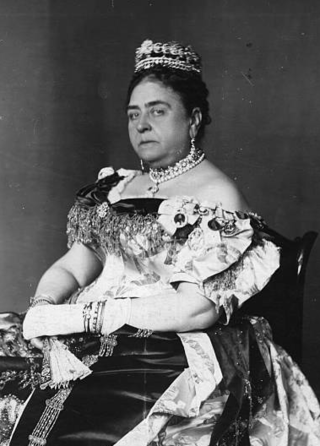
Princess Mary Adelaide of Cambridge, later known as the Duchess of Teck, was a member of the British royal family. She was one of the first royals to patronise a wide range of charities and was a first cousin of Queen Victoria.

Alexander Cambridge, 1st Earl of Athlone, was a member of the extended British royal family, as a great-grandson of King George III, a brother of Queen Mary, uncle to the Kings Edward VIII and George VI, and the husband of Princess Alice of Albany. He was a British Army commander, who served as Governor-General of the Union of South Africa and Governor General of Canada.
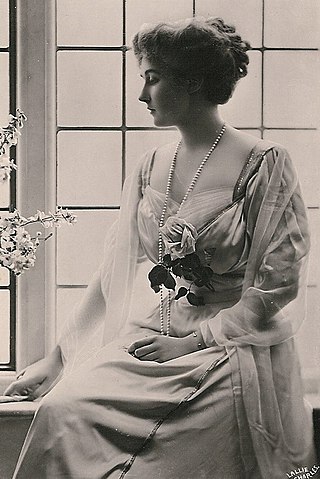
Lady Victoria Patricia Helena Elizabeth Ramsay was a granddaughter of Queen Victoria. Upon her marriage to Alexander Ramsay, she relinquished her title of a British princess and the style of Royal Highness.
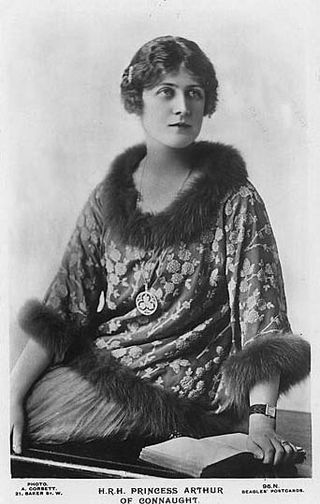
Princess Alexandra, 2nd Duchess of Fife, born Lady Alexandra Duff and known as Princess Arthur of Connaught after her marriage, was the eldest surviving grandchild of King Edward VII and also the first cousin of George VI. Alexandra and her younger sister, Maud, had the distinction of being the only female-line descendants of a British sovereign officially granted both the title of Princess and the style of Highness.
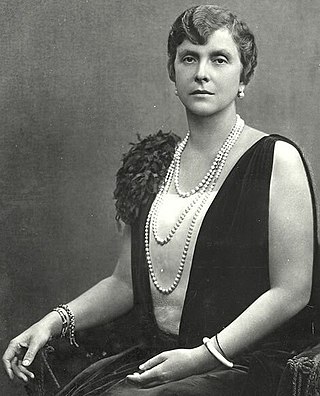
Princess Alice of Battenberg was the mother of Prince Philip, Duke of Edinburgh, mother-in-law of Queen Elizabeth II, and paternal grandmother of King Charles III. After marrying Prince Andrew of Greece and Denmark in 1903, she adopted the style of her husband, becoming Princess Andrew of Greece and Denmark.

Princess Augusta of Cambridge was a member of the British royal family, a granddaughter of George III. She married into the Grand Ducal House of Mecklenburg-Strelitz and became Grand Duchess of Mecklenburg-Strelitz.

Alastair Arthur Windsor, 2nd Duke of Connaught and Strathearn was a member of the British Royal Family. He was the only child of Prince Arthur of Connaught and Princess Alexandra, 2nd Duchess of Fife. He was a great-grandson of Queen Victoria through his father and a great-great-grandson of Queen Victoria through his mother. He was also a descendant of Victoria's paternal uncle and predecessor, William IV, through an illegitimate line.
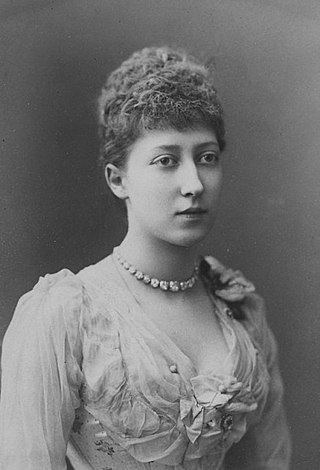
Louise, Princess Royal and Duchess of Fife was the third child and eldest daughter of King Edward VII and Queen Alexandra of the United Kingdom; she was a younger sister of King George V. Louise was given the title of Princess Royal in 1905. Known for her shy and quiet personality, Louise remained a low-key member of the royal family throughout her life.
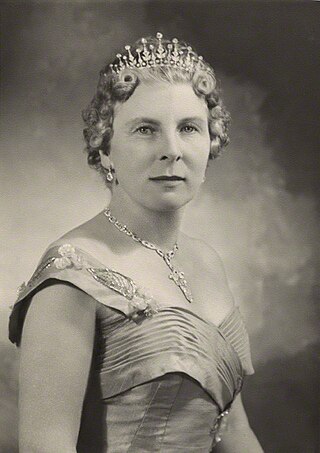
Lady May Helen Emma Abel Smith was a member of the British royal family. On her mother's side she was a great-granddaughter of Queen Victoria and on her father's side she was a great-great-granddaughter of King George III and the niece of Queen Mary, wife of King George V and mother of two kings. She led a private life in Britain. From 1958 until 1966, she lived in Brisbane, while her husband, Sir Henry Abel Smith, served as the governor of Queensland.
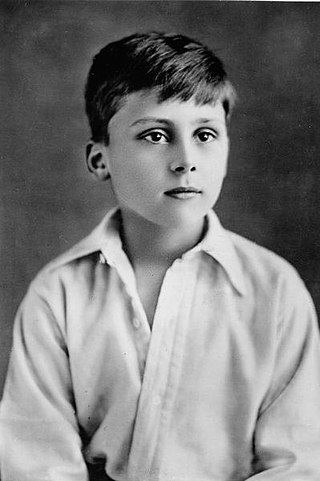
Rupert Alexander George Cambridge, Viscount Trematon was an English-born great-grandson of Queen Victoria. Originally Prince Rupert of Teck, he and his family relinquished their German titles in 1917. As heir apparent to the Earldom of Athlone, he was known as Lord Trematon, but he died before he could inherit the title.

The Royal Burial Ground is a cemetery used by the British royal family. Consecrated on 23 October 1928 by the Bishop of Oxford, it is adjacent to the Royal Mausoleum, which was built in 1862 to house the tomb of Queen Victoria and Prince Albert. The burial ground lies on the Frogmore estate within the Home Park at Windsor, in the English county of Berkshire.
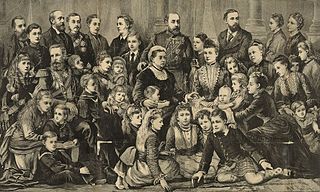
Queen Victoria, the British monarch from 1837 to 1901, and Prince Albert had 9 children, 42 grandchildren, and 87 great-grandchildren. Victoria was called the "grandmother of Europe".

St George's Chapel at Windsor Castle in England is a castle chapel built in the late-medieval Perpendicular Gothic style. It is a Royal Peculiar, and the Chapel of the Order of the Garter. St George's Chapel was founded in the 14th century by King Edward III and extensively enlarged in the late 15th century. It is located in the Lower Ward of the castle.

On 6 July 1893, Prince George, Duke of York, and Princess Victoria Mary of Teck were married at the Chapel Royal, St. James's Palace, in London, England.

The wedding of Princess Elizabeth and Sir Philip Mountbatten took place on Thursday 20 November 1947 at Westminster Abbey in London, United Kingdom. The bride was the elder daughter of King George VI and Queen Elizabeth as well as the heir presumptive to the British throne. The groom was born a Greek and Danish prince; he stopped using these foreign titles on his adoption of British nationality four months before the announcement of their marriage and was made Duke of Edinburgh, Earl of Merioneth and Baron Greenwich on the morning of the wedding.

Victoria, Queen of the United Kingdom of Great Britain and Ireland and Empress of India, died on 22 January 1901 at Osborne House on the Isle of Wight, at the age of 81. At the time of her death, she was the longest-reigning monarch in British history. Her state funeral took place on 2 February 1901, being one of the largest gatherings of European royalty.

The wedding of Prince Henry, Duke of Gloucester, and Lady Alice Montagu Douglas Scott took place on Wednesday, 6 November 1935, in the private chapel at Buckingham Palace. A larger public ceremony had been planned for Westminster Abbey, but plans were scaled back after the bride's father, the 7th Duke of Buccleuch, died of cancer on 19 October.
References
- 1 2 3 4 5 "Princess Alice, at London Home; A Grandchild of Queen Victoria". The New York Times. 4 January 1981. Retrieved 27 May 2018.
- ↑ "Yvonne's Royalty Home Page — Royal Christenings". Archived from the original on 6 August 2011. Retrieved 27 December 2010.
- ↑ "The Confirmation of Princess Alice of Albany at St George's Church, Cannes". The Illustrated London News . 16 April 1898. pp. 5, 6.
- ↑ "HRH Princess Alice, Countess of Athlone". The Times . 5 January 1981. p. 14.
- ↑ Stegner, Wallace (January–February 1969). "Discovery! The Story of Aramco Then". Saudi Aramco World. 7.
- ↑ Aronson, Theo (1981). Princess Alice, Countess of Athlone. London: Cassell. p. 123. ISBN 0304307572 . Retrieved 2 June 2016.
- ↑ De vijf peetouders van prinses Beatrix. The Memory of the Netherlands. Retrieved on 2008-07-11.
- ↑ "Earl of Athlone (1874–1957)". University of Warwick. Archived from the original on 16 April 2009. Retrieved 25 March 2009.
- ↑ "Royal Pictures by South African Artist, Jacob Hendrik Pierneef, on Sale at Bonhams in London". artdaily.org. Retrieved 27 May 2018.
- ↑ "Life Calls on the Earl of Athlone". Life. Vol. 17, no. 6. 7 August 1944. pp. 94–97. Retrieved 24 August 2018.
- 1 2 3 Office of the Governor General of Canada. "Governor General > Former Governors General > Major General The Earl of Athlone". Queen's Printer for Canada. Archived from the original on 11 February 2009. Retrieved 24 March 2009.
- ↑ "The Earl of Athlone," Former Governors General, The Governor General of Canada, accessed 22 April 2011.
- ↑ the Princess Alice Barracks Cabin at Britannia Bay Ottawa Citizen Jul 10, 1944
- ↑ Hubbard, R.H. (1977). Rideau Hall . Montreal and London: McGill-Queen's University Press. p. 201. ISBN 978-0-7735-0310-6.
- ↑ Hubbard 1977 , p. 202
- ↑ "PRINCESS ALICE, AT LONDON HOME: A GRANDCHILD OF QUEEN VICTORIA". The New York Times. Archived from the original on 7 October 2016. Retrieved 29 December 2017.
- ↑ Aronson, Theo (1981). Princess Alice, Countess of Athlone (first ed.). London: Cassell. p. 185. ISBN 0304307572.
- 1 2 "Sotheby's To Sell An Historic Album Photographs Recording the First British Royal Visit to Saudi Arabia and Bahrain". Art Daily. Archived from the original on 17 October 2015. Retrieved 19 July 2013.
- ↑ "Audio Slideshow: Princess Alice in Saudi Arabia". BBC. 11 October 2010. Retrieved 27 May 2018.
- ↑ Morris, Loveday (30 July 2011). "Alice in Arabia: the first British royal to visit Saudi Arabia". The National.
- ↑ "Journey of a Lifetime: The visit of HRH Princess Alice, Countess of Athlone to the Kingdom of Saudi Arabia" (PDF). College of Social Sciences and International Studies. Retrieved 27 May 2018.
- 1 2 Morris, Loveday (30 July 2011). "Alice in Arabia: the first British royal to visit Saudi Arabia". The National. Retrieved 21 July 2013.
- ↑ "The journey of a lifetime". Geographical. July 2011. Archived from the original on 21 May 2014. Retrieved 21 July 2013.
- ↑ Princess Alice, Countess of Athlone (1966). For My Grandchildren. London: Evans Bros. OCLC 654367087.
- ↑ Hitler's Favourite Royal (Channel 4 documentary) Dec 2007
- ↑ "Royal Burials in the Chapel since 1805". College of St George - Windsor Castle. Retrieved 5 March 2023.
- ↑ Evans, Rob; Pegg, David (18 July 2022). "£187m of Windsor family wealth hidden in secret royal wills". The Guardian. Retrieved 19 July 2022.
- ↑ "No. 38161". The London Gazette (Supplement). 1 January 1948. p. 9.
- ↑ "No. 34396". The London Gazette (Supplement). 11 May 1937. p. 3074.
- ↑ Vickers, Hugo (1994). Royal Orders. Boxtree. p. 147. ISBN 9781852835101.
- ↑ World Orders of Knighthood and Merit: Volume 1. Burke's Peerage & Gentry. 2006. p. 832.
- ↑ "History | FANY (PRVC) - Princess Royal's Volunteer Corps". FANY (PRVC) - Princess Royal's Volunteer Corps. Retrieved 22 May 2017.